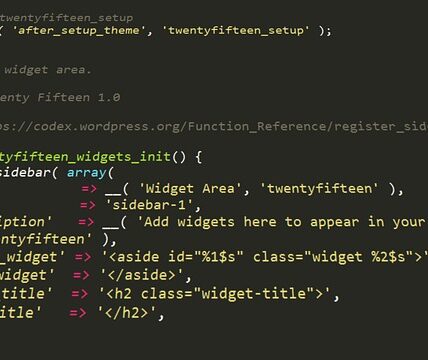Are you curious about why React.js is a popular web development technology? What advantages does it offer, and which features make it so popular? Are there any risks associated with using React.js?
There is little doubt that React.js has revolutionized the way many websites and web applications are developed. It provides a high-performance user interface for JavaScript applications, offering a wide array of features and tools for developers to create robust and interactive applications. The increasing popularity of React.js has been driven by its ability to deliver high-quality applications while providing an easy to learn, and use development platform. This is supported by a number of sources such as Google, Gartner and Forrester, who have confirmed the value of JavaScript development using React.js.
In this article you will learn about the core features of React.js, such as virtual DOM, one-way data flow, progressive loading, and others. You will also find out about the advantages of using React.js, its popular libraries and components, and what development project types it is suitable for. Finally, you will get an insight into the security issues that you should consider when using React.js.
By the end of this article, you will know how React.js works, what features it has and what the advantages and risks of using it are. This knowledge will enable you to make an informed decision on whether React.js is the right technology for your project.
Definitions
React.js is a Javascript library for developing user interfaces (UIs). It is designed to be used on both the front-end and back-end for web development. It is a declarative, efficient, and flexible JavaScript library that focuses on building UI’s. React.js is often used by developers to create interactive user interfaces on mobile and web applications.
The core concepts of React.js are components, state, props, and hooks. Components are the building blocks of React.js. They are individual pieces of code that can be used for organizing and creating UI elements. State is a special object used for data management. It keeps track of changes made to a component’s data and renders it when necessary. Props are variables passed down from a component’s parent to child components. Hooks are specific functions used for triggering updates in components without writing class components.
React.js also has several features that make it a powerful tool for developing user interfaces. One of these features is the Virtual DOM (Document Object Model). Virtual DOM acts as a virtual representation of the HTML DOM, where all changes done to an element are tracked in memory before being applied to the actual DOM. This speeds up development time and improves performance. It also reduces the risk of errors and increases user experience.
Other features of React.js include server-side rendering, code splitting, JSX, and performance optimization. Server-side rendering is used to render the components on the server-side, before sending them to the client. Code splitting is used to break up components into smaller, more manageable chunks, while JSX is the syntax used for writing components. Performance optimization helps to reduce the number of network requests a page makes, creating a faster and smoother user experience.
React.js is a powerful and versatile tool for developing user interfaces. Its core features like components, state, props, and hooks make it easier to design and develop modern web applications. Its features like Virtual DOM, server-side rendering, code splitting, and performance optimization help to speed up development and improve user experience. Understanding how to use React.js and its features is vital for web developers.
Data Flow and React Components
Data Flow and React Components
React.js is a JavaScript library for building user interfaces and is often the choice of web developers for developing large single page applications. Primarily used for frontend development, React.js provides developers with a comprehensive set of tools that make it possible to quickly and easily create large web applications with a well-structured codebase. Its main feature is that it is built around a virtual DOM (Document Object Model).
Virtual DOM
React.js allows developers to declare the ‘state’ of their application, and the library will take care of updating the DOM (Document Object Model) to match the declared state. This reduces the amount of time it takes to create web applications, as well as the amount of time it takes to maintain them. This is because the virtual DOM takes care of the whole process, including the rendering of components and ensuring data is up to date.
Component-based Architecture
The use of components and a component-based architecture is a major feature of React.js. Components are small and reusable pieces of code that can be used to build larger applications. This makes it easy to iterate on an application, as well as simplifying coding and allowing code that has already been written to be reused.
React.js also comes with a fully featured developer toolkit that allows developers to create, manage and test components easily and efficiently. This includes a variety of features such as: debugging, full-stack trace and component-level error tracking.
Fast Rendering
React.js uses the virtual DOM to update the UI efficiently. This means that components only have to be re-rendered if the data has changed in order to show the new state of the application. This ensures that web applications remain responsive and fast, making them easier to use and improving the overall user experience.
Improved Performance
React.js provides developers with the ability to write highly performant code. This is done through a combination of techniques such as using the virtual DOM, components and JSX. As well as this, components can be optimized using the React.js toolkit, allowing developers to write more efficient code and ensuring that applications run as efficiently as possible.
List of features
- Virtual DOM for efficient rendering
- Component-based architecture for building applications
- Developer toolkit for testing and debugging
- Fast rendering and improved performance
State Management and React Hooks
React.js is a powerful JavaScript library for building user interfaces. React makes it painless to create interactive UIs with an intuitive programming model and with a flexible user interface. React components are components that can be reused in different parts of your application.
State Management and React Hooks
State management is an important concern in React applications. It is what allows components to interact with each other in memory to efficiently update the view. This can be challenging when dealing with large applications that have many components that need to update when data changes. To make this process easier, React provides state management APIs that allow components to opt in to having their state be managed. One such API is React Hooks.
React Hooks is a way of managing state in React. It provides an easy way to keep state up to date between components by allowing components to subscribe to changes in the state of other components. Hooks can also be used to manage data fetching, handle imperative updates, and other similar use cases for state management. With React Hooks, you can control how state changes for your components while preserving the component’s modularity.
React Hooks also makes it easy to build data visualizations, as it provides an API for linking a component’s state to the UI. This makes it easier to visualize data and creates an interactive component that can be reused in multiple applications. For example, you can define a hook that links a component’s data to a chart component. When the data is changed, the chart component can easily update itself based on the new data. This allows developers to quickly create data visualizations without having to worry about a complicated data inter-dependency tree.
React Hooks is a powerful addition to React’s state management toolbox, allowing developers to efficiently manage data between components and create interactive UIs. With Hooks, developers can easily create highly interactive components with minimal overhead.
React Virtual Dom and Performance
ReactJS is a powerful open source front-end library used for developing user interfaces (UIs). It is a component-based solution which enables developers to build large-scale applications using small, independent and reusable components. ReactJS simplifies the process of developing complex user interfaces (UIs) and allows developers to create efficient and performant web and mobile-based applications. React works on the concept of “Virtual DOM” or “VDOM” which stands for virtual Document Object Model. It is a lightweight copy of the actual DOM of your HTML page. This allows ReactJS to render faster than traditional JavaScript frameworks.
React Virtual Dom and Performance
React is a great choice for developing high-performance user interfaces (UIs). It utilizes a virtual DOM that stores all changes made to a user interface (UI) so that they can be applied without actually re-rendering the entire interface. This allows React applications to respond more quickly while using fewer resources, allowing for smoother and faster performance. React applications also benefit from using a virtual DOM, as all changes made to the UI will be synchronized with the real DOM. This minimizes the amount of time wasted on manual synchronization, which can dramatically improve the overall performance of an application.
React Component Library
React also comes packaged with a comprehensive component library. This library supports developers by providing them with an array of components that can be used to quickly assemble an application. The library can be used to easily develop UIs for both web and mobile-based applications. It allows developers to easily share UI components across multiple projects. Developers can also take advantage of the component library to easily define custom components and integrate them into larger projects.
Easy to Use
React is designed to be easy to use for developers. It is created with JavaScript but comes packaged with a lot of helpful features, such as lifecycle methods, error and property bindings, and componentized styling. This allows developers to write less code, which simplifies the development process and helps to ensure that the code is more maintainable. React also provides helpful debugging tools, which allow developers to quickly identify issues in their applications.
In conclusion, React is an excellent choice for building high-performance user interfaces (UIs). It utilizes a virtual DOM that helps to minimize resource usage and speeds up development. React also comes with a comprehensive component library that allows developers to quickly assemble complex user interfaces. It is easy to use, with lifecycle methods, error and property bindings, and componentized styling. All of these features combine to make React an excellent option for developers building UIs.
Conclusion
Modern web-development tools are evolving faster and faster, and React.js is a great example of that. With its features and capabilities to create and maintain user interfaces, React.js stands out as one of the leading frameworks. But what exactly makes React.js so beneficial? What are the features of React.js that make it such a desirable development tool?
Along with this thought-provoking question, it’s important to remember that React.js is continuing to evolve and release new features all the time. Following our blog will give you up-to-date knowledge about React.js and the latest features that it is releasing, so stay tuned. Moreover, in order to keep up with the pace of development, React.js is constantly introducing new features and experiments with its current ones. So don’t forget to wait for the latest releases in order to truly experience the full capabilities of React.js.
In order to help you understand React.js’ features better, we’ve prepared a brief Frequently Asked Questions section below:
1. What are the components of React.js? According to the official React guide, the core of React.js consists of components which are controlled parts of your application. These components are written in JavaScript, and they are responsible for updating the UI of the application with an efficient and concise manner by using the state of the application.
2. How does React.js help with maintenance? Maintaining an application written with React.js is much easier than traditional web applications. With React.js, changes can actually be “hot-loaded”, meaning that the user does not have to reload the browser in order to see the changes. This can result in better user experiences and lower development costs.
3. What is the one-way data binding used in React.js? One-way data binding is one of React.js’s features that helps make it an attractive choice among developers. This type of data binding enforces that data will flow from the parent controls to the child components, but not the other way around. This helps to make the development process more organized and much easier to debug.
4. How can React.js help with performance? React.js offers a range of features that helps to improve the performance of the application, such as it’s virtual DOM and use of one-way data binding. These features help to optimize the development process and also aids in reducing the amount of resources needed to run the application.
5. Does React.js have any graphics library? React.js does include a library of graphics, known as Recharts. Recharts enables you to create animated, interactive charts to add to your application. It also provides numerous customizable features, allowing you to customize the charts for your specific needs.




